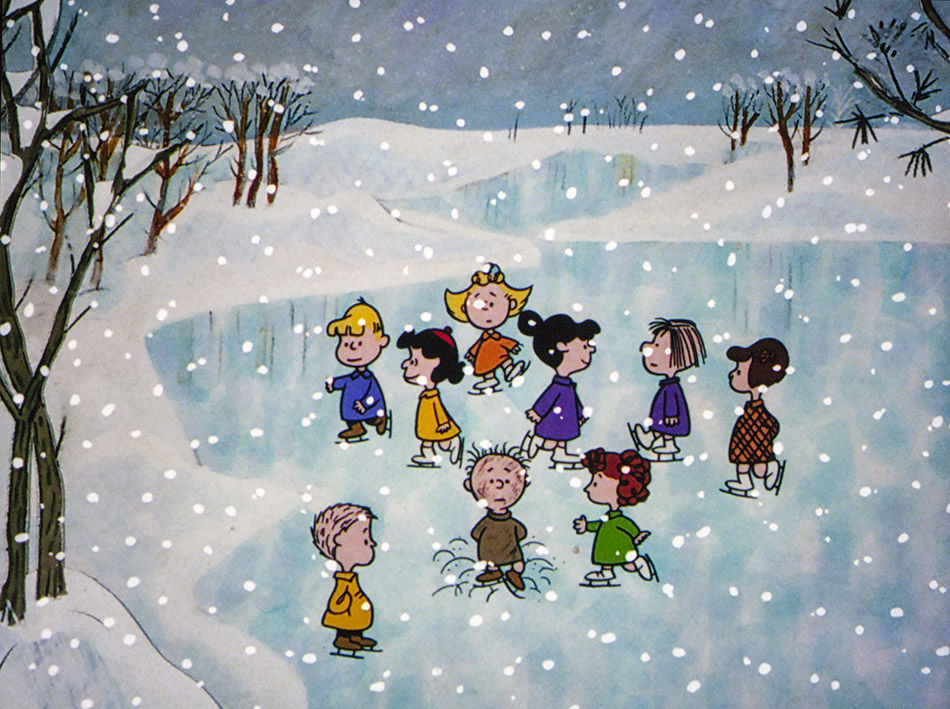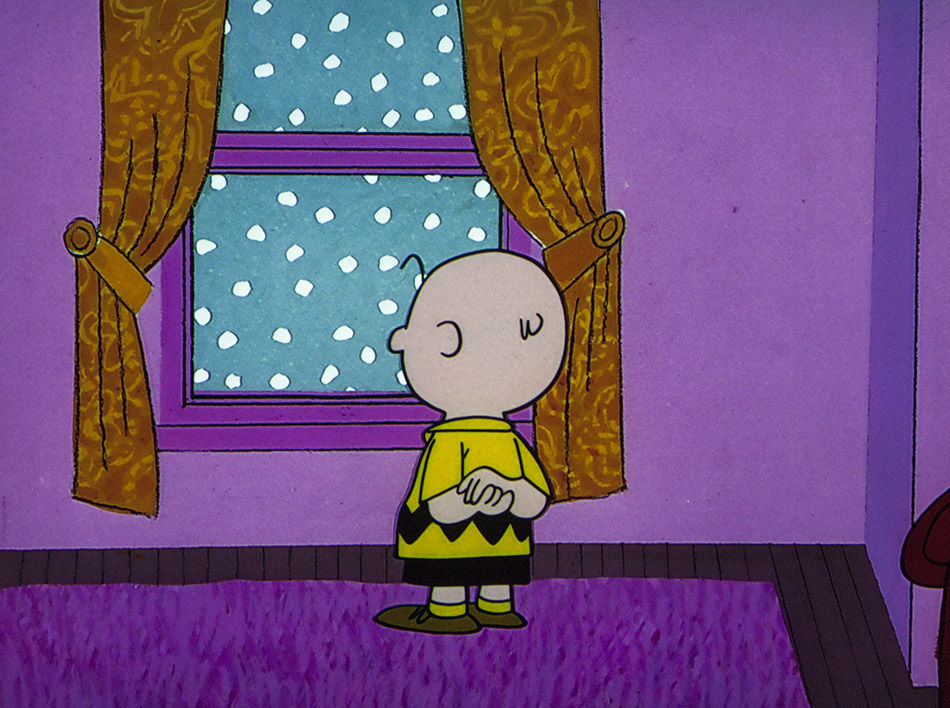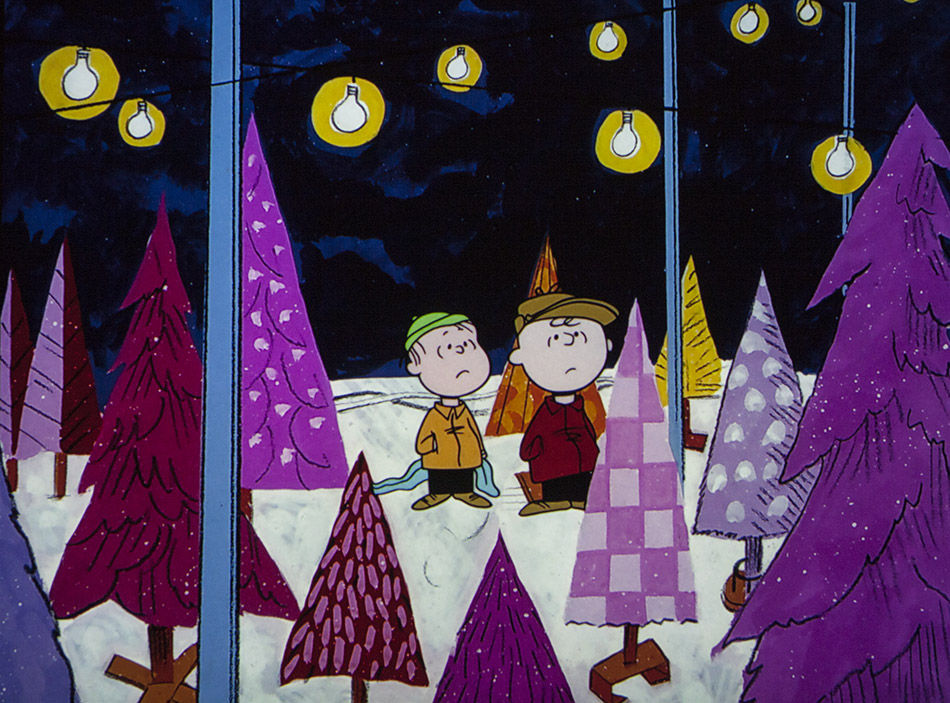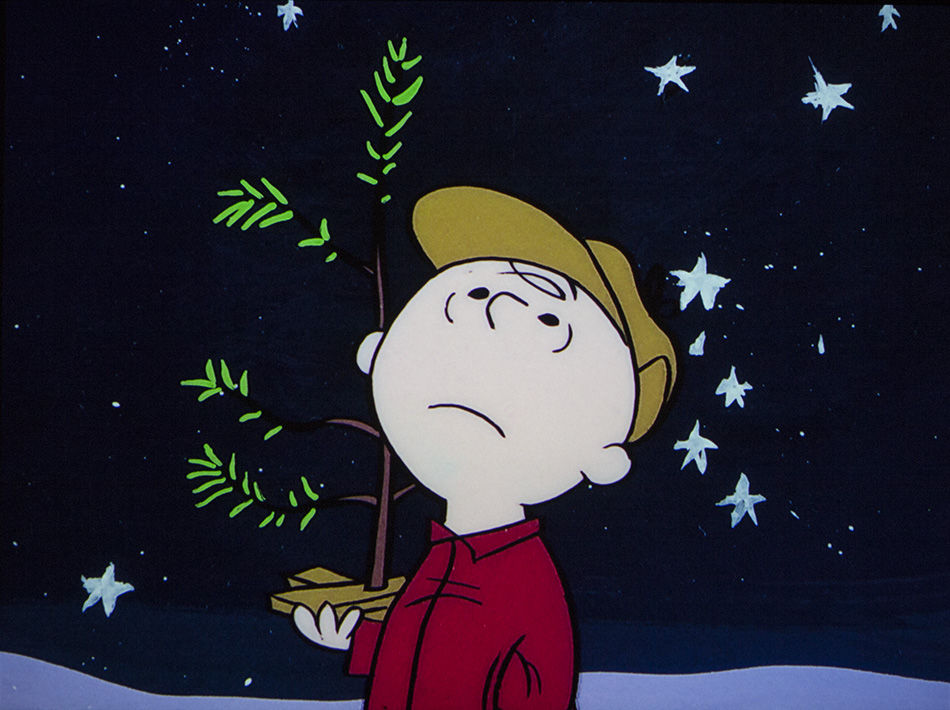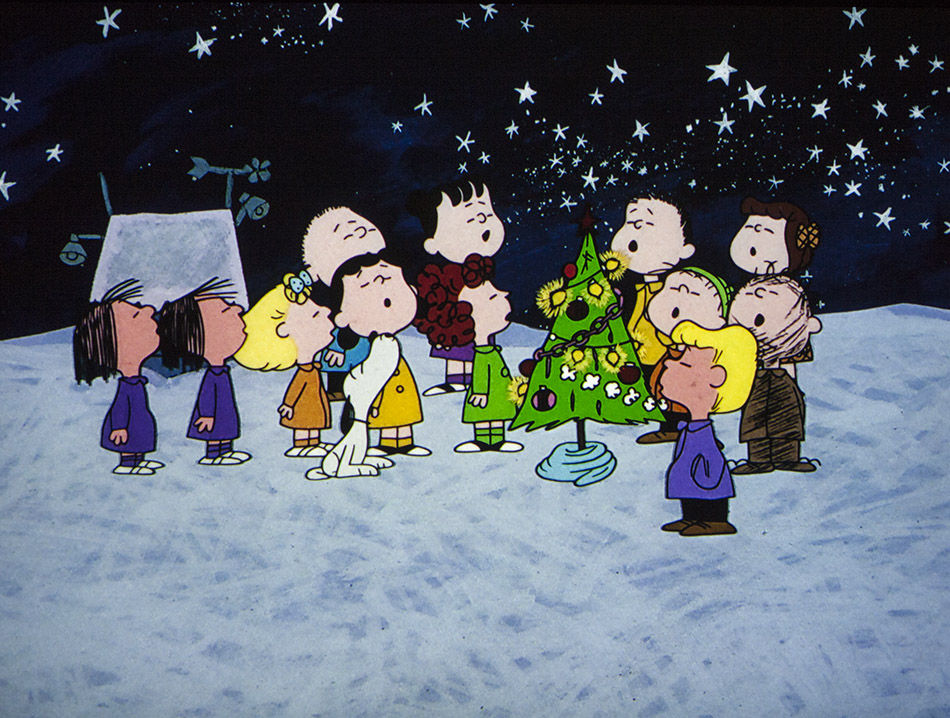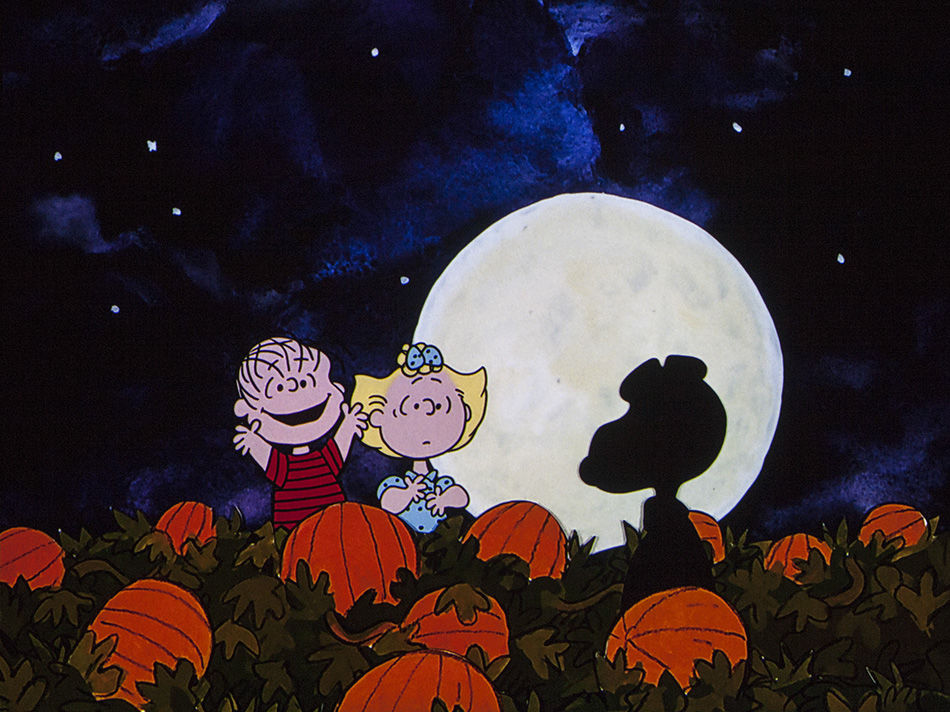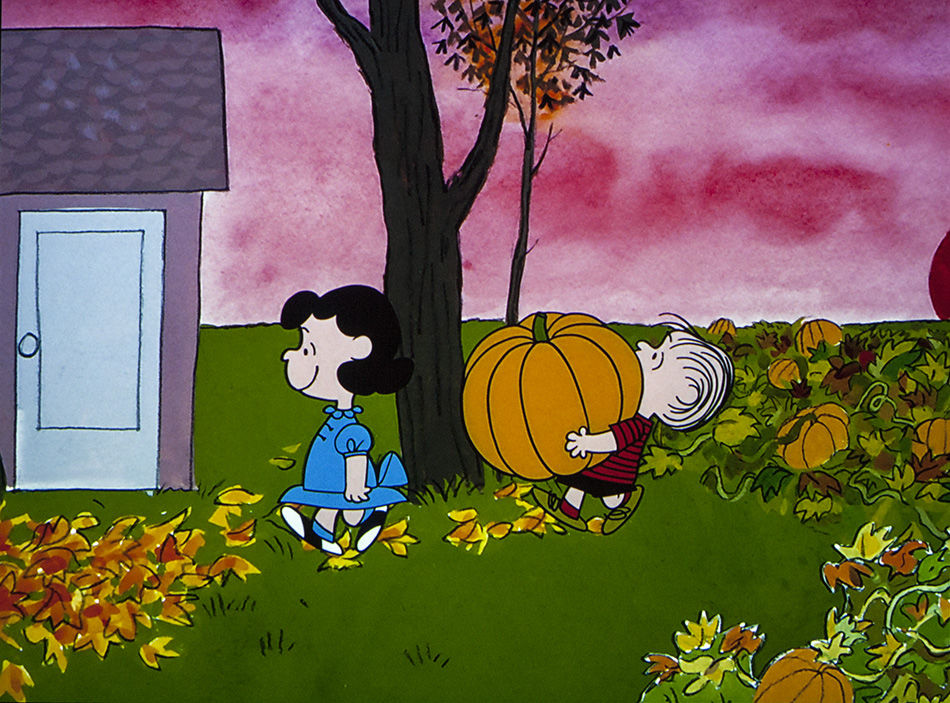Celebrate the seasons with “Peanuts: Holiday Collection” in 4K Ultra HD
- Bill Kelley III
- Oct 23, 2017
- 5 min read
Updated: Jan 16, 2023
4K ULTRA HD REVIEW / HDR FRAME SHOTS

"A Charlie Brown Christmas" (1965) Charlie Brown and Linus go looking for a Christmas tree.
“PEANUTS: HOLIDAY COLLECTION”
4K Ultra HD, Blu-ray and Digital copy; 1965, 1966, 1973; Not Rated, for everyone; Streaming via Amazon Video, CinemaNow, iTunes, Playstation, Vudu, Xbox and others
Best extra: "A Christmas Miracle: The Making of a Charlie Brown Christmas"
ARTIST Charles "Sparky" Schultz desired only one thing – "to draw funny pictures."
At the end of World War II, the U.S. Army veteran settled in an apartment over a barbershop in St. Paul, Minnesota, where he fine-tuned his craft. He worked as an art instructor, sold cartoons to "The Saturday Evening Post," and developed a weekly comic for the St. Paul newspaper. It featured simple drawings of articulate kids with large heads, a forerunner to the legendary "Peanuts."
On October 2, 1950, "Peanuts" found a home in seven newspapers. The twenty-something could never imagine the impact his four-panel comic strip would have on pop-culture, newspaper readership (it's syndicated in over 2,600 papers) or the annual broadcast of seasonal TV specials starring Charlie Brown, Snoopy, Linus, Lucy, Schroeder, Peppermint Patty and others.
Again approaching the Holiday Season, Warner Brothers Home Entertainment has released the TV classics: "A Charlie Brown Christmas" (1965), "It's the Great Pumpkin, Charlie Brown" (1966), and "A Charlie Brown Thanksgiving" (1973), all remastered in 4K, scanned from the 35mm camera negative, or a second generation print when needed, and released for the first time on 4K Ultra HD.
The 4K discs also include six additional specials: "Charlie Brown's All-Stars" (1966), "Play it Again, Charlie Brown" (1971), "It's Magic, Charlie Brown" (1981), "It's Flashbeagle, Charlie Brown" (1984), "The Mayflower Voyagers" (1988) and "It's Christmastime Again, Charlie Brown" (1992).
The evolution from comic to major TV production was born in the spring of 1965.
The Coca-Cola Company planned its advertising campaign for the upcoming holiday season, hoping to land a TV sponsorship for a Peanuts Christmas special. Good grief! Schultz and company hadn't even planned a TV special at this point. So, when producer Lee Mendelson got the call from the New York advertising agency representing Coca-Cola, asking if a Christmas show was in the works, he was so shocked he told them, "Absolutely." The folks at Coca-Cola were thrilled with the news, and wanted to see a story outline the following Monday.
Mendelson instantly called Schultz and told him, "I think I sold a Charlie Brown Christmas," he recalls in an interview in the making-of featurette included on an enclosed Blu-ray." Two days later, Mendelson and animator/director Bill Melendez were at the Schultz home just north of San Francisco brainstorming possible storylines. "Sparky was incredibility creative; not just as a cartoonist, but also a storyteller," Melendez says. By Thursday afternoon, the plot had crystallized and was forwarded to Coca-Cola. The following week, "A Charlie Brown Christmas" began production.
It was an enormous undertaking trying to produce that first animated special within such a short window. Over 13,000 drawings were needed, voice talent selected and a composer lined up. "They had to invent 'Peanuts' for television. The characters had never functioned in that environment before," animation writer/historian Mark Evanier says.
Once the animation drawings were underway, Mendelson called on jazz composer and pianist Vince Guaraldi – a huge "Peanuts" fan – to see if he was interested in scoring the special. A few days later, Guaraldi called Mendelson back and said, "I have a song and I must play it over the phone before I forget it," Mendelson recalls. It featured an upbeat piano rhythm, which would include warm brushwork from drummer Jerry Granelli for the tune "Linus and Lucy." It became an instant jazz classic for the Vince Guaraldi Trio. On LP, it became one of best-selling Christmas records of all-time in the U.S., and was also voted into the Grammy Hall of Fame.
Originally, the opening song "Christmas Time is Here" was penned as an instrumental by Guaraldi, but Mendelson felt it needed lyrics. So, the producer jumped in and whipped up the words in less than 20-minutes.
"Christmas time is here, happiness and cheer. Fun for all that children call their favorite time of year."
A children's choir from St. Paul's Episcopal Church in San Rafael, Calif., provided the spirit and charm. "I knew for whatever reason it was going to have a huge impact on the show. It was so right and perfect," Mendelson says.
Non-actor kids were used for the voices except for the voice of Charlie Brown, played by child actor Peter Robbins. "I hated the thought of hiring adults pretending to be children," Melendez says.
The final animation was finished just 10 days before it aired, and everyone was nervous. Network executives were not happy with the early screening, and Melendez felt it was going to be a disaster.
At 7:30 p.m. on December 9, 15 million American families tuned their TVs to CBS to watch the first Charlie Brown special. Most TVs were still black and white, missing out on Charlie Brown's yellow and black shirt, the vibrant purple wall and red house, and millions of other shades of colors created by the animators. Surprisingly, the special finished in second place in the weekly ratings, just behind NBC's hit, "Bonanza." It also received high critical praise and won an Emmy for Outstanding Children's Program.
"It's the Great Pumpkin, Charlie Brown" (1966) Sally joins Linus in a huge pumpkin patch of orange.
VIDEO
The "Peanuts'" specials get their biggest boost in 4K clarity with the wide shots. For example, when Linus takes the stage to recite the true meaning of Christmas, viewers can still pick out his mouth, eyes and his favorite blanket in hand from the distant viewpoint of the back of the school auditorium. During "Great Pumpkin," added resolution is evident when Sally joins Linus in a huge pumpkin patch of orange, contrasted against a nighttime sky of dark blue, grays and purple with wavy clouds and stars.
Each 4K frame is available in its old-school square shaped (1.37:1 aspect ratio) matching its original broadcast or reformatted in widescreen (1.78:1) with some cropping on the top and bottom to fill horizontal 4K sets. I watched the classic format, to make sure I viewed the frame from corner to corner, catching every brush stroke and line drawn by the artists. These specials were all hand-drawn.
The HDR contrast and color toning provides a noticeable uptick in color and brightness, and black levels for each special. The "Thanksgiving" show, the tenth in the series, gets the snappiest picture. Woodstock, Snoopy's little bird friend, pops in yellow.
The audio was also upgraded from its original mono to six-channel DTS HD for a lively soundtrack – especially with Guaraldi's enchanting arrangements.

"A Charlie Brown Thanksgiving" (1973)
EXTRAS
The featurette "We Need a Blockbuster, Charlie Brown" highlights how CBS demanded another blockbuster … and threatened to pull the plug if "It's the Great Pumpkin, Charlie Brown" wasn't a hit. All of the voice actors rejoined the project, and Guaraldi composed the music for all of the "Peanuts'" specials until his death in 1976.
The featurette "Popcorn & Jellybeans: Making a Thanksgiving Classic" highlights how this special wasn't based on any previous comic strip. Basically, they "winged it and wrote a completely original script," "Peanuts'" historian Scott McGuire says. A new crop of kids were hired for the characters, which now included Chris DeFaria, a boy, as the voice for Peppermint Patty. DeFaria is now the president of DreamWorks Animation.
The "Peanuts'" specials are an American institution, and deserve more family viewings than the annual rebroadcasts. So, get the popcorn going and rally the kids and grandkids together for a magical evening.
― Bill Kelley III, High-def Watch producer


